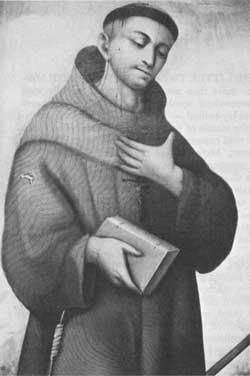Mission San Pedro y San Pablo de Bicuñer facts for kids
| Location | Imperial County, California, near Yuma, Arizona |
|---|---|
| Coordinates | 32°48′59″N 114°30′54″W / 32.81639°N 114.51500°W |
| Name as founded | La Misión de San Pedro y San Pablo de Bicuñer |
| English translation | The Mission of Saint Peter and Saint Paul of Bicuñer |
| Patron | The Apostles Saint Peter and Saint Paul |
| Founding date | January 7, 1781 |
| Founding priest(s) | Father Francisco Garcés |
| Founding Order | Franciscan |
| Native tribe(s) Spanish name(s) |
Quechan Yuma |
| Current use | Nonextant |
| Reference no. | #921 |
Mission San Pedro y San Pablo de Bicuñer was a Spanish mission. It was started on January 7, 1781, by a Spanish friar named Francisco Garcés. Its main job was to protect a travel route called the Anza Trail. This trail crossed the Colorado River. The mission was located about 10 miles (16 km) northeast of Yuma Crossing in what is now California. It was part of the Arizona missions, not the California mission chain.
Contents
History of the Mission
Why the Mission Was Built
The Spanish built Mission San Pedro y San Pablo de Bicuñer to help protect the Anza Trail. This trail was important for travel and communication. It connected the Spanish areas of Alta California and New Navarre (part of Mexico).
Problems with Local People
The mission and a nearby Spanish settlement were not well supported. Spanish settlers began to take the best lands. They also destroyed the crops of the local Quechan people, also known as the Yuma Indians. The Spanish did not respect the rights of the native people living there.
The Quechan Attack
Because of these problems, the Quechan people and their allies decided to fight back. From July 17 to 19, 1781, they attacked and destroyed Mission San Pedro y San Pablo de Bicuñer. They also attacked a nearby mission called Mission Puerto de Purísima Concepción.
About 50 Spanish people were killed during this attack. This included Father Garcés, three other friars, and Captain Fernando Rivera y Moncada. The Quechan people took the Spanish women and children captive.
Impact of the Attack
The Quechan victory was very important. It closed this crossing point over the Colorado River. This made it much harder for the Spanish to communicate between California and colonial Mexico.
What Remains Today
Today, the mission site is marked by a special sign. This sign is a California Historical Landmark. It is located on Imperial County Road S24, near Bard, California.
California Historical Landmark 921
A California Historical Landmark is a place that has been officially recognized for its importance in California's history. Landmark number 921 marks the site of Mission San Pedro y San Pablo de Bicuñer.
The marker says: NO. 921 SITE OF MISSION SAN PEDRO Y SAN PABLO DE BICUNER – To protect the Anza Trail where it crossed the Colorado River, the Spanish started a settlement and mission here on January 7, 1781. The Quechan (Yuma) people felt their land was threatened. They attacked this important settlement on July 17, 1781. The Quechan victory closed this river crossing. This made it very difficult for future communication between upper California and Mexico.
See also
- Spanish missions in Arizona
- Spanish missions in California
- California Historical Landmarks in Imperial County
- Spanish missions in the Sonoran Desert
- Spanish missions in Baja California
- California Historical Landmark


